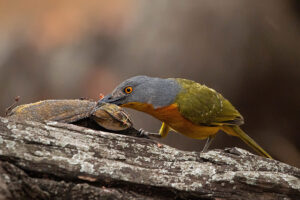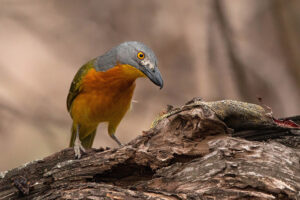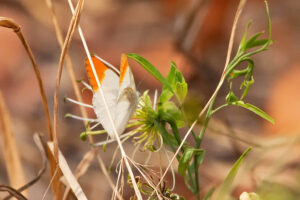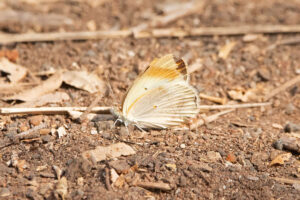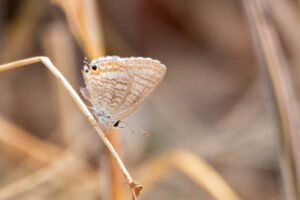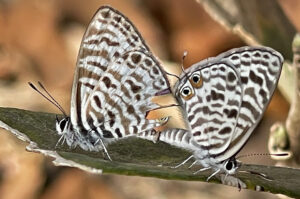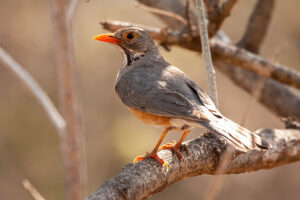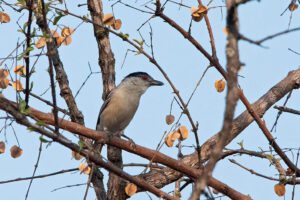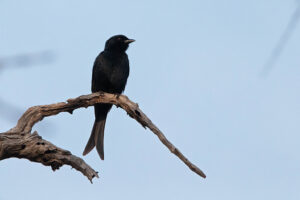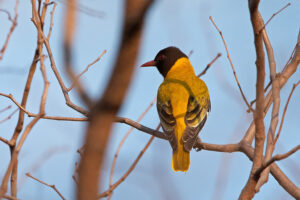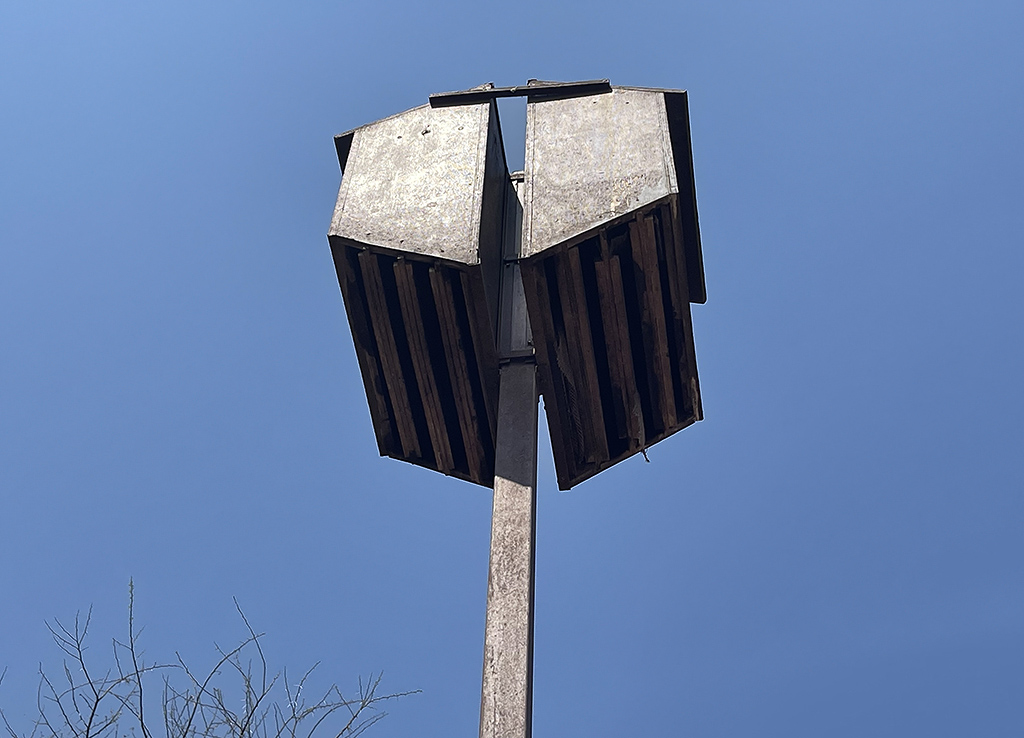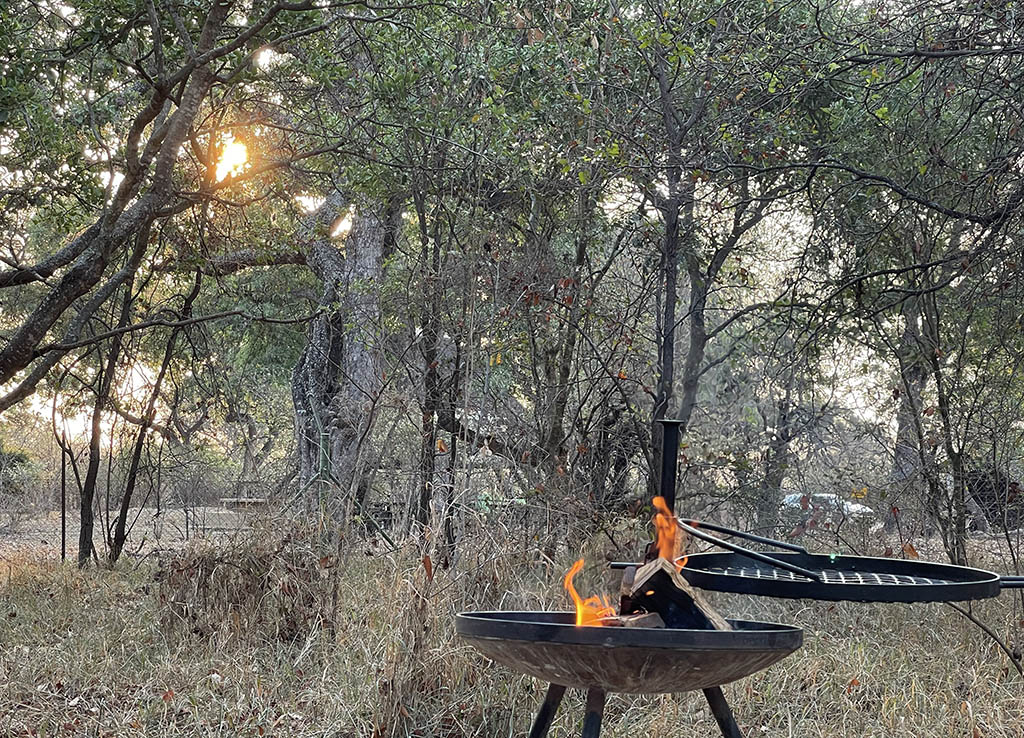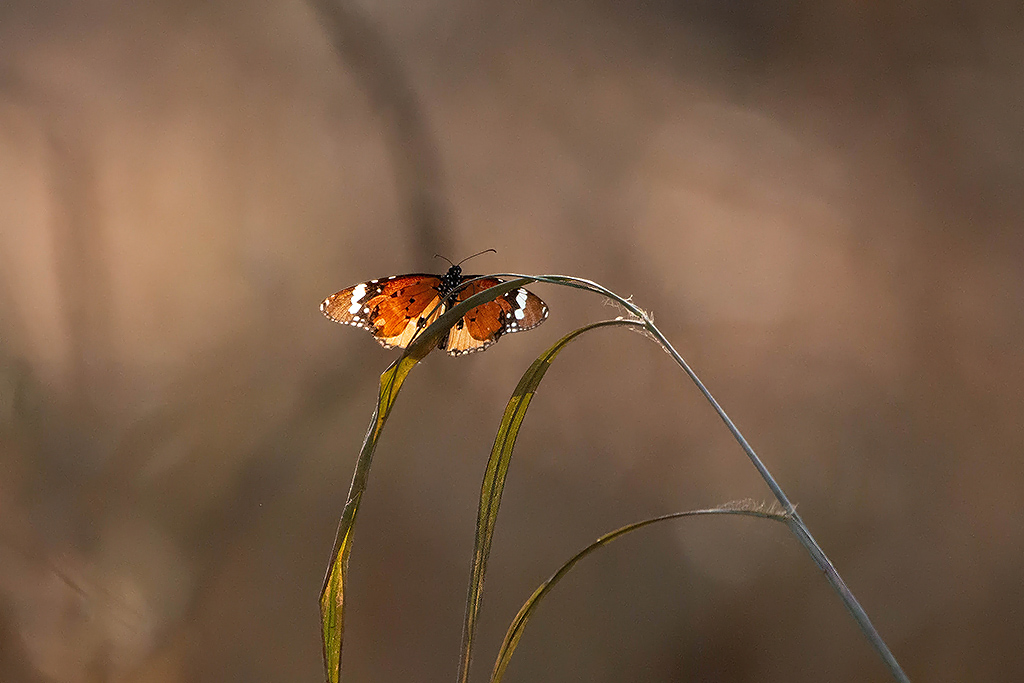I visited Tsendze briefly in 2020 when I drove past on the way to Mopani. I met Rodger and Elina and found them and the camp delightful.
So when I had to choose a camp for camping, Tsendze sprung to mind instantly. I was allocated Camp Site 22. I was surprised how large the site was – I am sure I could have fit 10 of my tents in the space! I noticed Rodger and a couple of fellow campers at a tree next to my camp site and knew instantly that they must be looking at one of the resident Owls. I switched off the car to go and have a look, but then I was distracted by a Grey-headed Bushshrike. 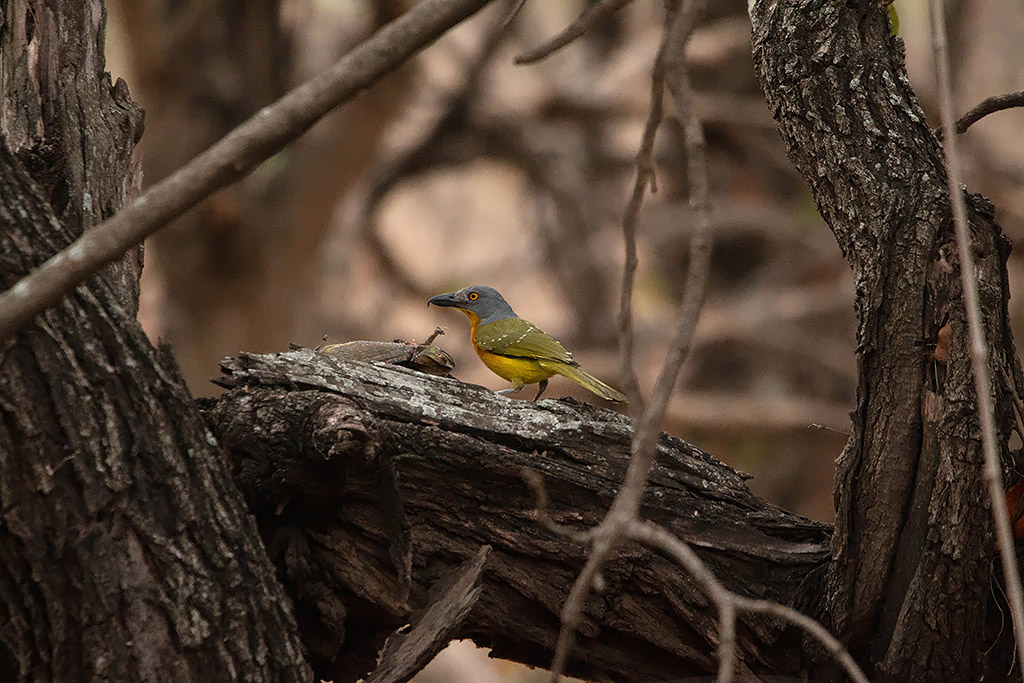
The little Scops Owl was going nowhere, so everyone’s attention shifted to the Bushshrike feeding on the Chameleon.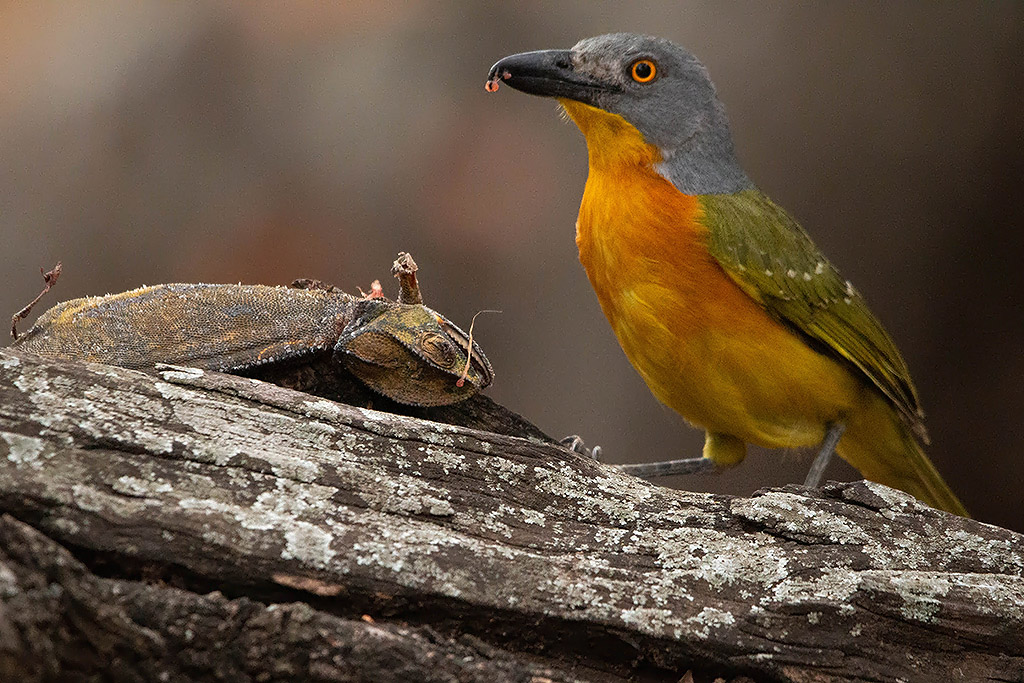
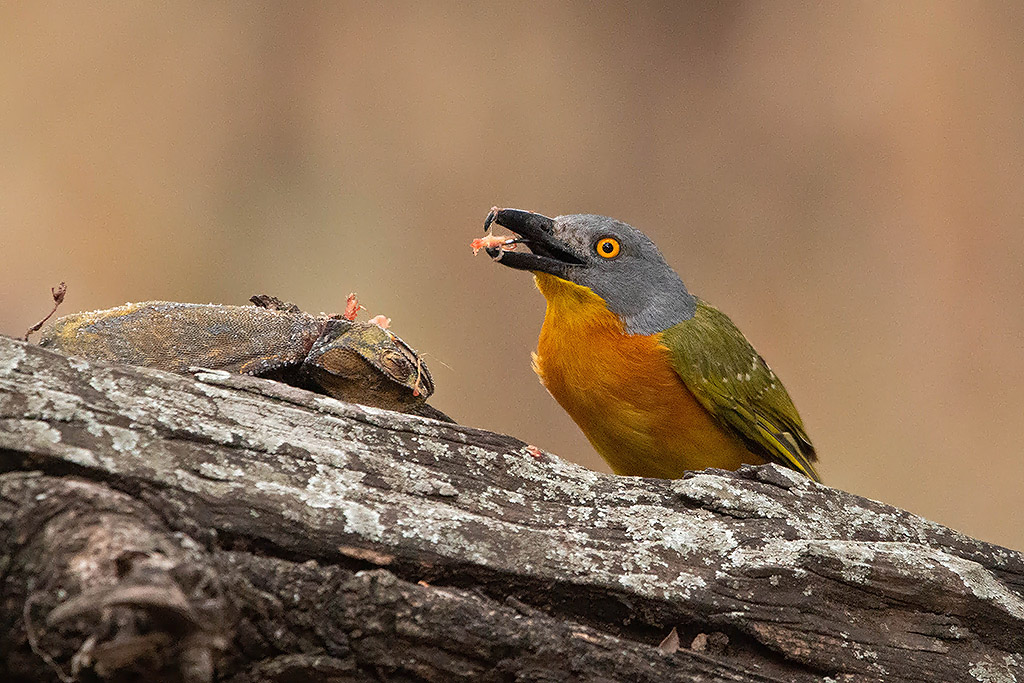
Every time the Shrike flew off to feed its chick somewhere out of sight, Rodger and I would work on pitching my tent, and when the bird came back, we would take more photos and then continue pitching the tent when the bird flew off again.
The little Scops Owl perched in the tree at my camp site every day that I was there. It was wonderful to see this tiny little Owl every day.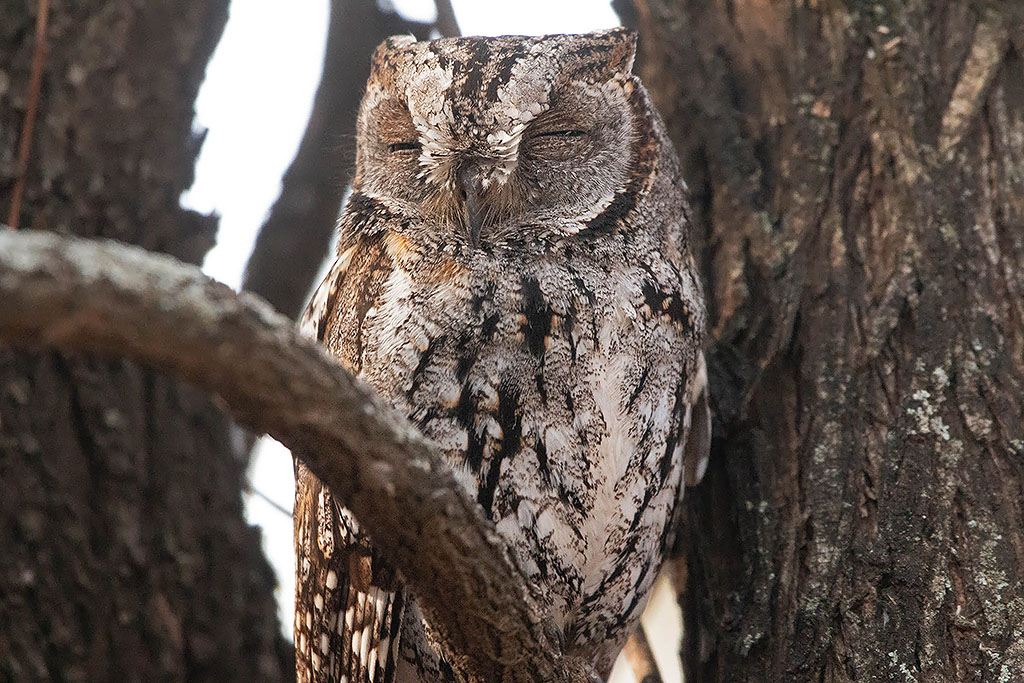
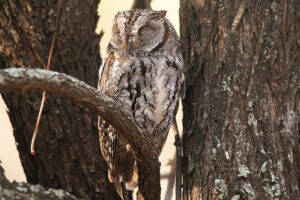
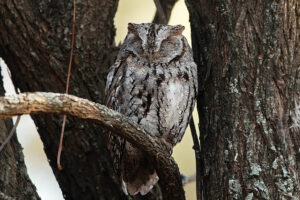
One of the other regular visitors at my camp site was a Red-billed Hornbill. There were a few of them in camp and they would scrounge around for snacks in in the fallen leaves of the Apple Leaf Tree at my camp site.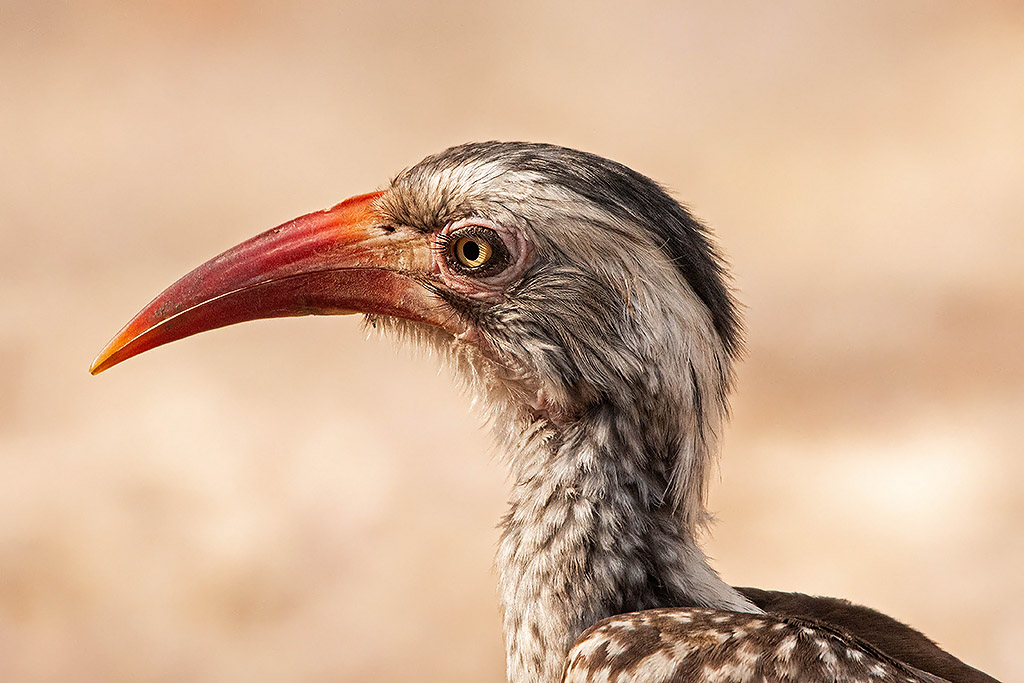
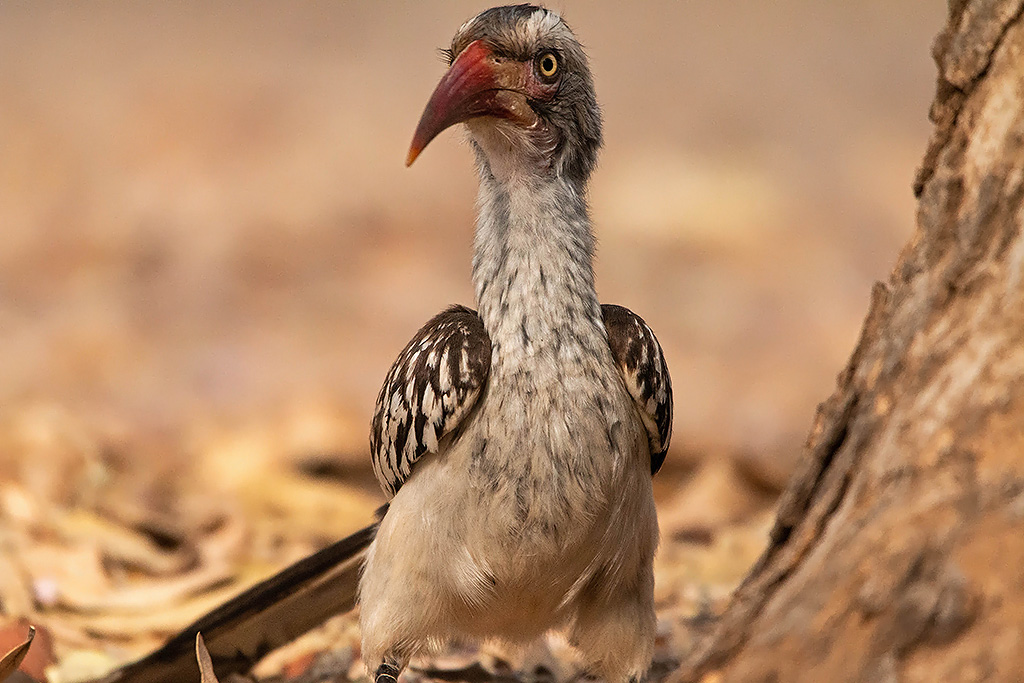
The African Grey Hornbill also made a quick appearance in camp. Mostly I just heard its call as it flew over at dusk.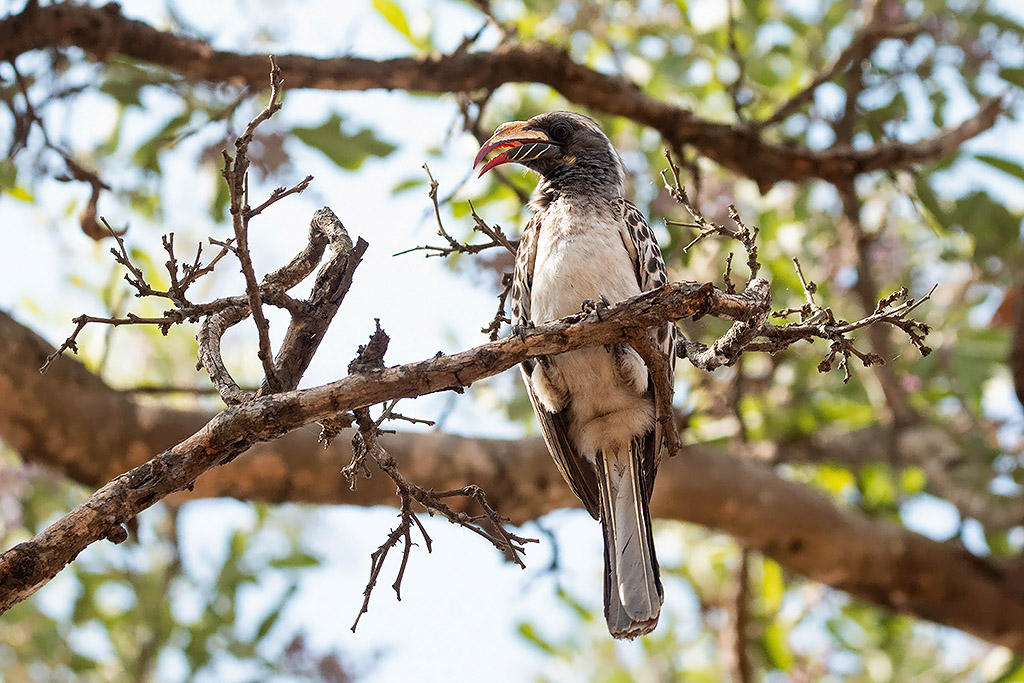
On one of my walks I found a Yellow-billed Hornbill searching for food.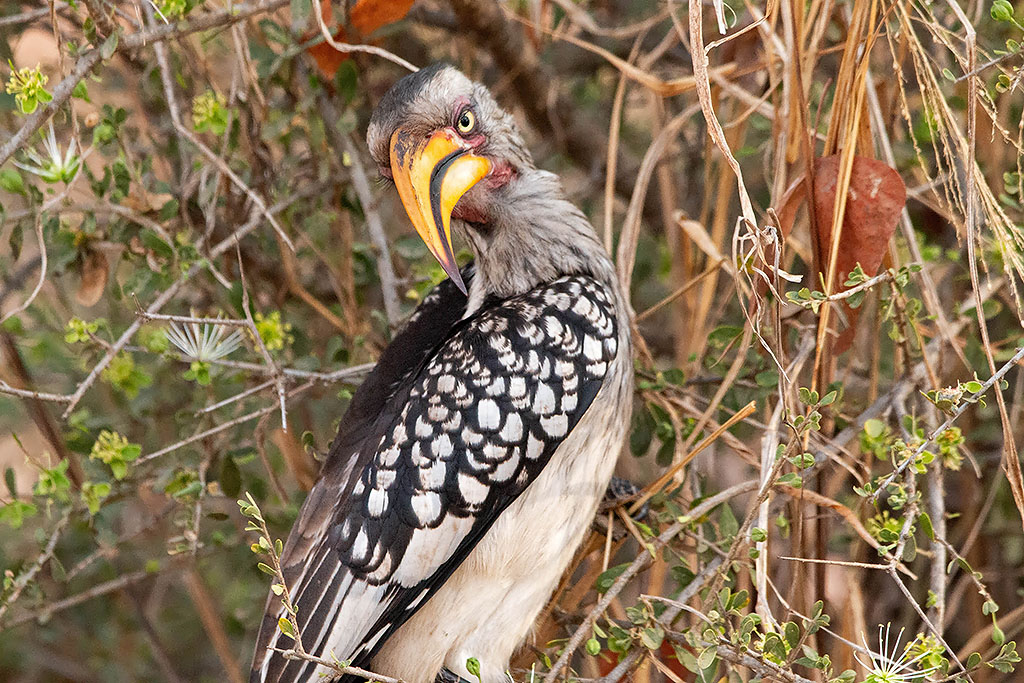
One afternoon I was walking around the camp when I spotted a cute little Rough Scaled Lizard. I managed one photo before he dashed off into the leaf litter.
There were lots of Butterflies around camp. On one walk I found an African Orange Tip a swell as Small Orange Tip.
A couple of Eastern Striped Skinks would hang out near the kitchen.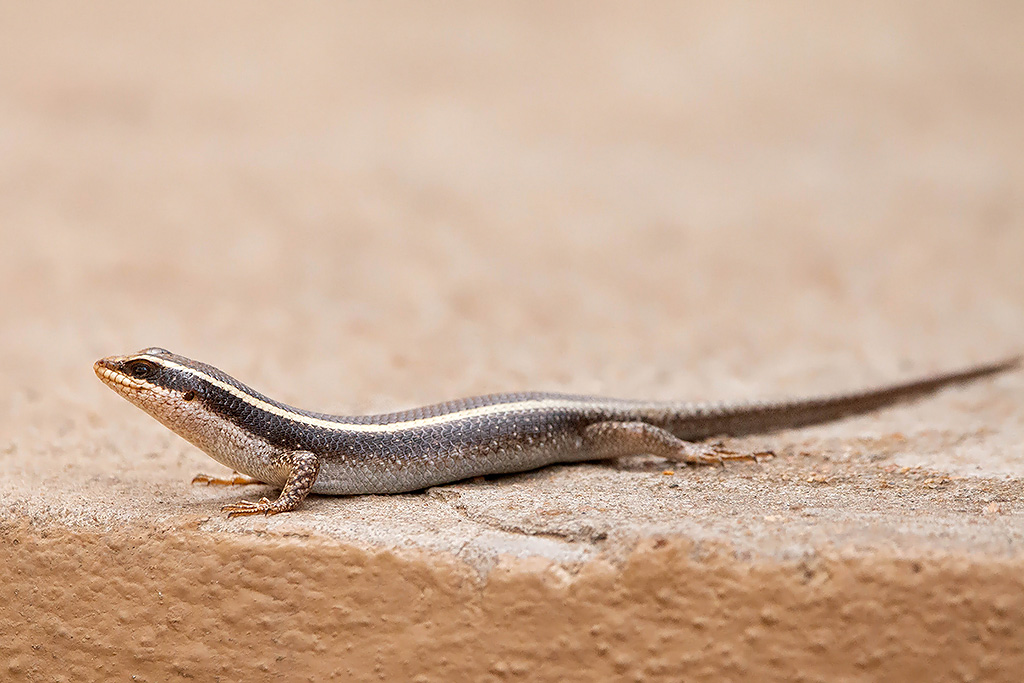
Other Butterfly species that were very common were Pea Blue Butterflies, and one of the Zebra Blue species whose ID you can apparently only confirm by looking at it’s private parts under a microscope!
Some of the other birds included a Kurrichane Thrush, Black-backed Puffback, Fork-tailed Drongo and Black-headed Oriole.
One morning I found this Arrow-marked Babbler on my car. I had a good giggle at his antics!
On the Wednesday afternoon I did not go for a drive and spent afternoon in the camp. The noisy Green Wood Hoopoos showed up. They took a particular interest in the Apple Leaf Tree next to my tent.

A Brown-crowned Tchagra jumped around in a bush. As I followed him I discovered that there were actually 3 of them. It is not often that I find these birds out in the open and willing to pose for photos.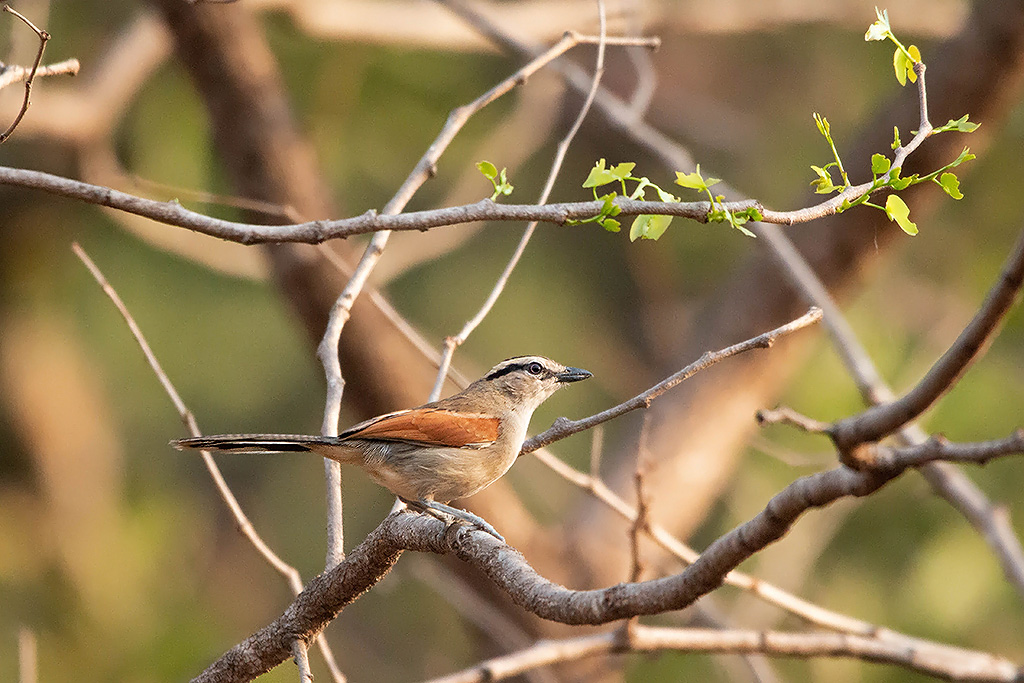
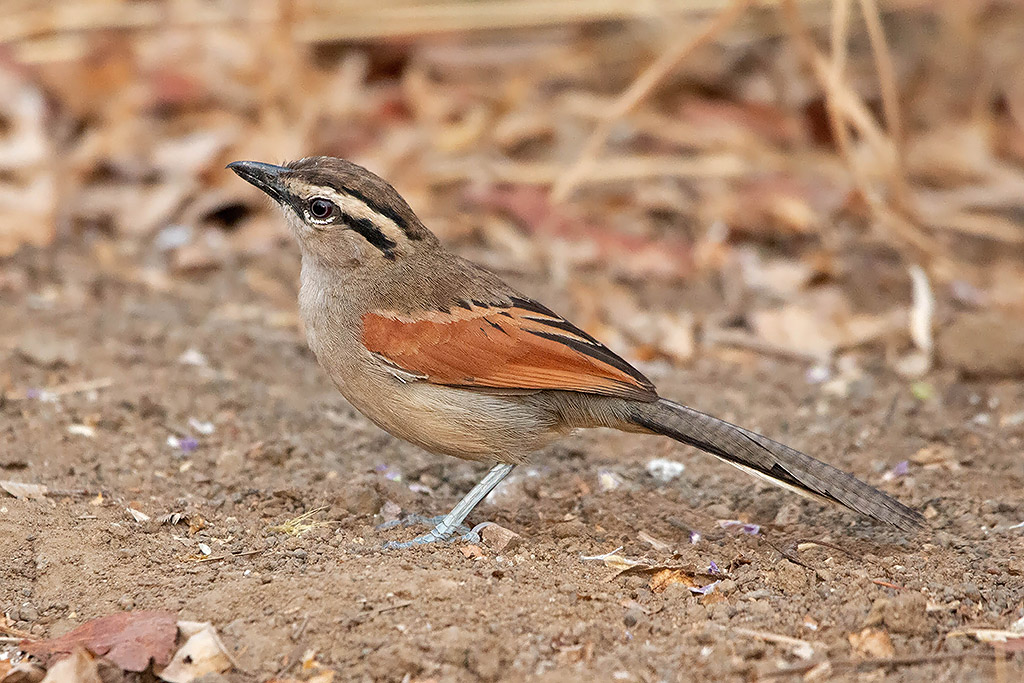
Another cute one was a Long-billed Crombec.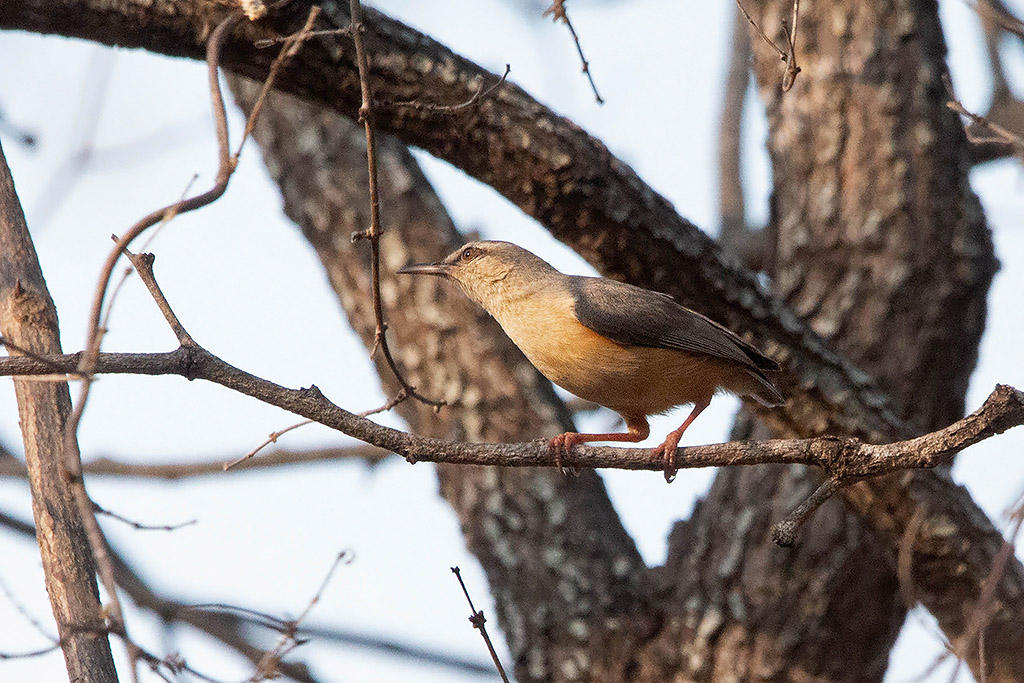
I am not sure if this Tree Squirrel stole the marshmallow or if he was given it. But I did wonder if he would have a tummy ache later that night!
I heard a Woodpecker peck Wood. I scanned the canopy of a tree in the next camping site and found the source of the sound in the form of a Cardinal Woodpecker.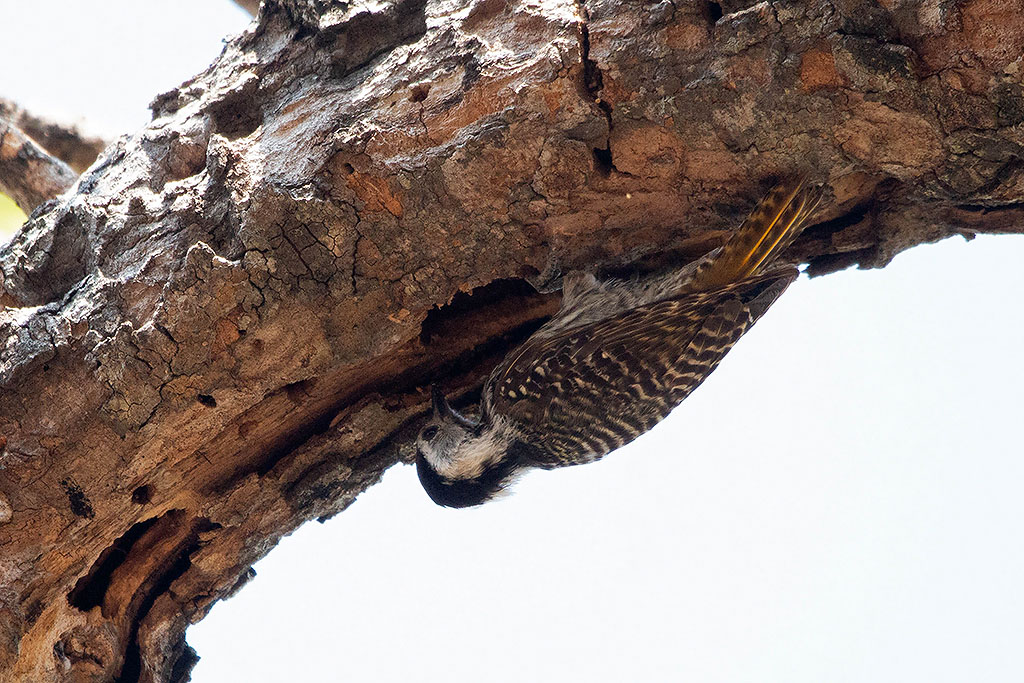
The start of any day in Kruger is always very special, and made even more so by the dawn Chorus. On most mornings I could hear African Fish Eagle, Pearl-spotted Owlet, Arrow-marked Babblers, Kurrichane Thrush, Fork-tailed Drongos, Crested Barbets and even a Verreaux’s Eagle Owl.
 Because everyone focuses on the dawn chorus, they often under estimate the dusk chorus. I would sit next to my little fire at dusk every evening and listen to the birds starting to say their good nights. The dusk chorus was actually better then the dawn chorus. The resident Natal Spurfowls had very strong voices. The Scops owl started calling every afternoon as the sun started to set. It was the sweetest little sound. African Grey, Red and Yellow-billed hornbills contributed to the chorus. The whole dusk chorus experience was made even better when I saw the silhouettes of the various birds flying above the trees. On some afternoons elephants, jackals and hyenas even joined in the chorus.
Because everyone focuses on the dawn chorus, they often under estimate the dusk chorus. I would sit next to my little fire at dusk every evening and listen to the birds starting to say their good nights. The dusk chorus was actually better then the dawn chorus. The resident Natal Spurfowls had very strong voices. The Scops owl started calling every afternoon as the sun started to set. It was the sweetest little sound. African Grey, Red and Yellow-billed hornbills contributed to the chorus. The whole dusk chorus experience was made even better when I saw the silhouettes of the various birds flying above the trees. On some afternoons elephants, jackals and hyenas even joined in the chorus.
On one of my walks I discovered the bat box. I was fascinated by the heap of guano underneath it.
That evening I was sitting next to my camp site at dusk when the bats left the bat box. It was the first time I had seen anything like it, and it was a most astonishing sight. Hundreds of bats flew across the sky. I watched in absolute awe, thrilled to have witnessed such a spectacle.
The marshmallow eating squirrel was not the only squirrel that provided entertainment. I was sitting in the shade of the trees next to my tent when I spotted these two partaking in a little grooming session. The one doing the grooming was being very thorough, and the one being groomed looked like he was enjoying it thoroughly!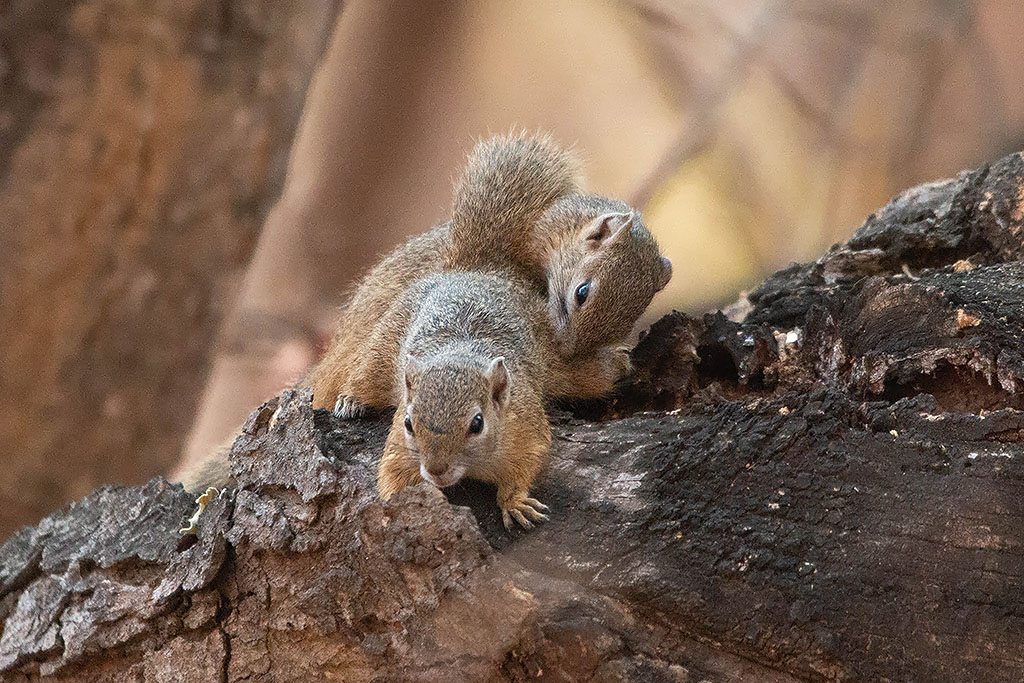
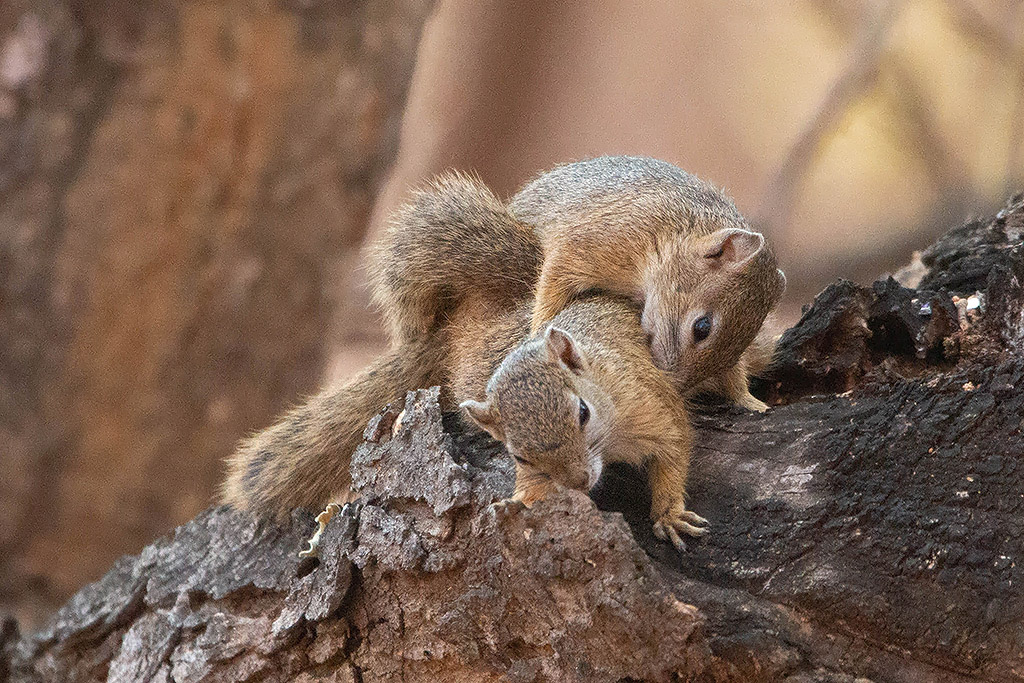
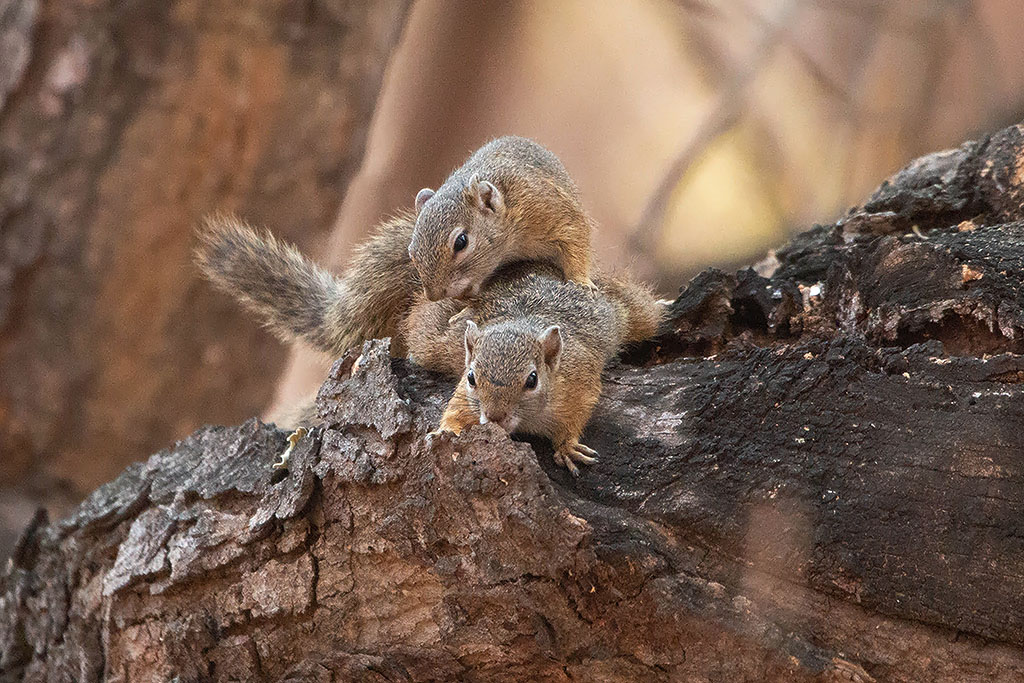
I was back in camp most afternoons long before gate closing. My camp site was on the western end of the camp and I watched the sun set every day. I would sit with a cold beverage, my little fire going happily, and the sun setting in the west.
It was a time to relax and reflect. Going on drives and seeing all the wonderful animals and birds was truly fantastic, but those quiet moments at the end of each day were truly food for the soul.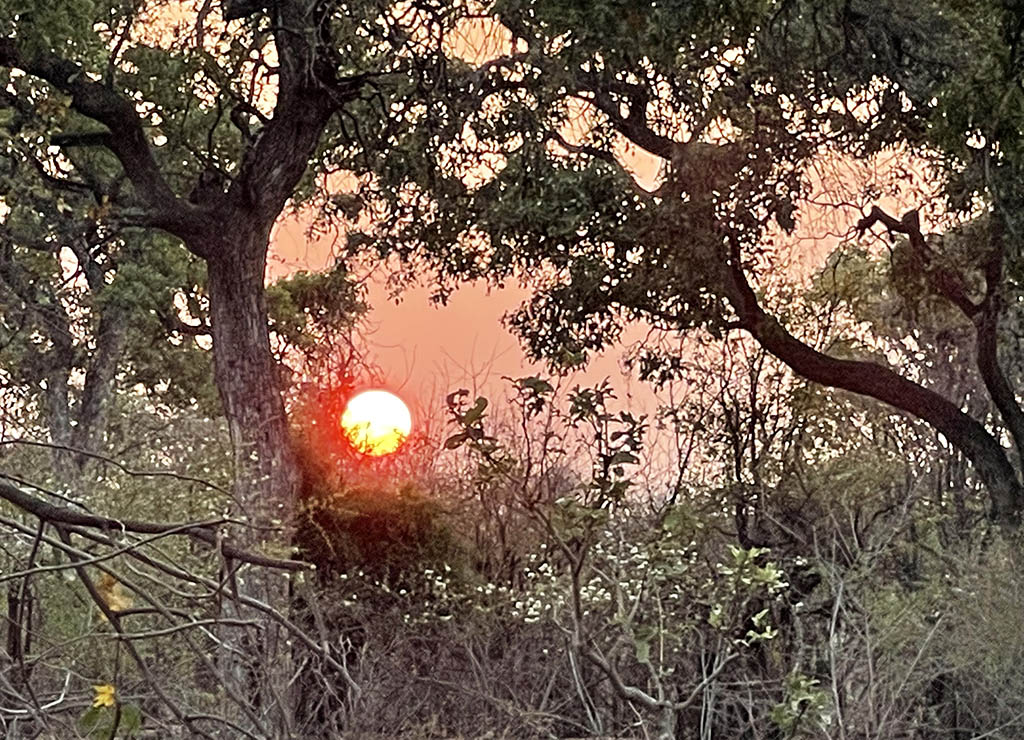
I heard an unfamiliar bird call early one morning. I looked up to see two Hamerkop landing in a tree. They then proceeded to mate. It was the first time that I had seen mating Hamerkop.
Tsendze Rustic Camp is a stunning camp. I looked at availability during the time I would be there just before I left and saw that it was basically fully booked. My first thought was Nooo! It will be packed and busy. But is never was. You knew there were other people, but it never felt crowded or busy. The facilities are excellent, as is the case with all Kruger camps. I really loved the open air showers – it was quite an experience to shower in the open air in the minutes before it got light. I will never forget the morning when I was showering and the Verreaux’s Eagle Owl called from a tree next to the bathrooms.
